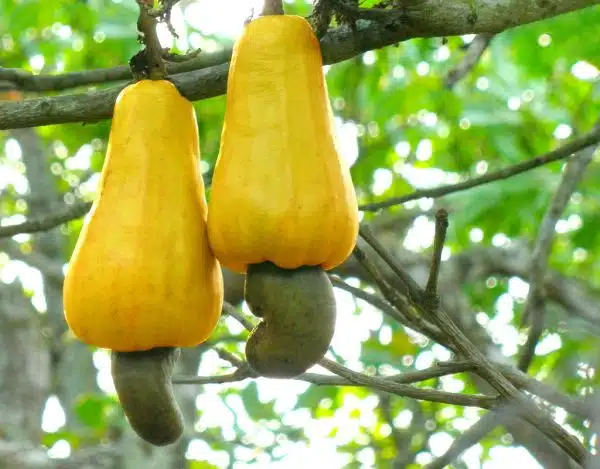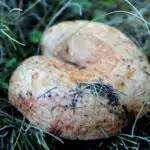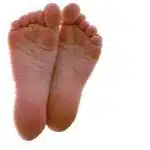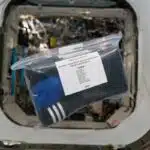As a cleaning expert, one of the most frequent questions I receive is how to remove stubborn stains from clothes and carpets. One of the most common culprits is apple juice stains. Whether it’s from a spill during breakfast or an accidental drop during snack time, apple juice stains can be a frustrating mess to deal with. However, fear not, as there are simple and effective methods that can help you remove these stains and prevent them from becoming permanent.
Apple juice contains natural pigments that can quickly penetrate fabrics and leave behind unsightly marks. If left untreated for too long, these stains can set into the fibers of your clothes or carpet, making them difficult to remove. This article will provide you with step-by-step instructions on how to tackle apple juice stains using common household items such as vinegar, baking soda, and dish soap. By following these tips, you’ll be able to restore your clothes and carpets to their former glory in no time.
Understanding The Science Of Stains
Stains are like puzzles that require an expert’s touch to solve. Understanding stain types is key to unlocking the puzzle and removing them effectively. Different stains require different treatments, and apple juice stains are no exception. These types of stains can be particularly stubborn due to their acidic nature.
The role of pH in stain removal cannot be overstated. The pH scale ranges from 0-14, with 7 being neutral. Stains with a low pH (acidic) require an alkaline solution for removal, while those with a high pH (basic) require an acidic solution. Apple juice stains fall into the low pH category and must be treated with an alkaline solution to neutralize the acid.
Effective stain removal requires more than just the right cleaning solution; timing is also crucial. Acting fast is essential to prevent the stain from setting into the fabric or carpet fibers permanently. The longer you wait to treat the stain, the harder it becomes to remove it completely. Prompt treatment can mean the difference between success and defeat in your battle against apple juice stains on clothes and carpets.
Acting Fast: The Importance Of Prompt Treatment
When it comes to removing apple juice stains from clothes and carpet, one of the most important factors to keep in mind is time management. Acting fast is crucial in preventing the stain from setting and becoming more difficult to remove. The longer you wait, the more likely it is that the stain will become a permanent fixture on your clothing or carpet.
In addition to time management, proper handling techniques are also essential in removing apple juice stains effectively. This includes avoiding rubbing or scrubbing the stain vigorously, which can cause it to spread and become even harder to remove. Instead, blotting gently with a clean cloth or paper towel can help to absorb as much of the liquid as possible before treating the area with a cleaning solution.
Overall, taking prompt action and using proper handling techniques are crucial in successfully removing apple juice stains from clothes and carpet. By doing so, you can increase your chances of completely eliminating the stain without causing any damage to your fabrics or carpets. In the next section, we’ll delve deeper into the importance of blotting versus rubbing when treating apple juice stains.
Blotting Vs. Rubbing: Which Is Best?
Blotting is a method of stain removal that involves pressing a cloth onto the stain to absorb the liquid. Rubbing is a method of stain removal that involves scrubbing the stain with a cloth to loosen and remove it. When removing apple juice stains from cloth, blotting is the preferred method due to its efficiency and ability to avoid further damage to the fabric. For carpet, rubbing is often the better option due to its ability to remove liquid and residue, as well as its ability to prevent re-staining.
Blotting
When it comes to removing apple juice stains from clothes and carpets, blotting is a crucial technique that can make a significant difference in the outcome. Blotting involves using an absorbent material such as a clean cloth or paper towel to gently dab at the stain, lifting as much of the liquid as possible without spreading it further. It is important to avoid rubbing the stain vigorously, as this can push the stain deeper into the fibers and make it more difficult to remove.
However, there are some common blotting mistakes to avoid when attempting to remove apple juice stains. First and foremost, do not use hot water or heat on the stain as this can set it permanently. Additionally, avoid using colored cloths or towels that may transfer their color onto the fabric during blotting. Finally, be sure to start blotting from the outside of the stain and work your way inward gradually to prevent spreading.
By mastering proper blotting techniques and avoiding common mistakes, you can effectively remove apple juice stains from clothes and carpets with ease. Remember that patience and persistence are key when dealing with stubborn stains – keep blotting until all of the liquid has been lifted from the fabric or carpet fibers. With time and practice, you’ll become a pro at removing even the toughest of stains!
Rubbing
When it comes to removing stains, blotting is often the recommended technique. However, there are times when rubbing can be more effective. Rubbing has benefits for muscle soreness and is a common technique used in massage therapy. When it comes to stain removal, rubbing can help to loosen and break up the stain particles, making it easier to remove.
Rubbing for stain removal should be done with care and caution. It is important not to rub too vigorously as this can damage the fabric or carpet fibers. Instead, start with gentle circular motions and gradually increase pressure as needed. Rubbing can also be combined with other techniques such as pre-treating or using a cleaning solution for optimal results.
For those who are hesitant about using rubbing for stain removal, it is important to remember that each situation may require a different approach. While blotting may work well for some stains, others may require the added benefits of rubbing. By understanding the proper techniques and being mindful of potential risks, you can effectively remove even the toughest of stains from your clothes and carpets.
Pre-Treatment: Removing Excess Liquid
Blotting the excess liquid is an important first step in removing apple juice stains from clothes and carpet. However, there are other pre-treatment methods that can help to make the stain removal process easier. One common mistake people make is using heat to dry the stain before attempting to remove it. This can actually set the stain and make it much more difficult to remove.
Another pre-treatment method that can be effective is using a cleaning solution specifically designed for removing stains. These solutions can be found at most grocery stores or online and are often applied directly to the stain before washing or further treatment. It’s important to read the instructions carefully as some solutions may require a certain amount of time to sit on the stain before being washed.
When attempting to remove apple juice stains from clothes or carpet, it’s important to avoid making mistakes that could worsen the situation. Pre-treatment is an important step and there are many options available, but it’s essential to read instructions carefully and avoid using heat. By taking these steps, you’ll have a better chance of successfully removing the stain without causing damage or discoloration. In the next section, we’ll explore vinegar: a versatile stain remover that can be used for a variety of different stains.
Vinegar: A Versatile Stain Remover
Vinegar is a versatile household item that can be used to clean up apple juice stains from clothes and carpets. It is an acidic solution that helps break down the stain and lift it off the fabric or fibers. White vinegar is the most commonly used type of vinegar for cleaning purposes, but apple cider vinegar alternatives can also be effective.
Using vinegar for other household cleaning tasks is also highly recommended due to its versatility. Vinegar can be used to clean windows, mirrors, floors, and even kitchen appliances such as microwaves and refrigerators. Not only does it have powerful cleaning properties, but it is also an eco-friendly alternative to harsh chemical cleaners.
To effectively remove apple juice stains using vinegar, follow these steps:
- Blot the stain with a clean cloth or paper towel to remove as much excess moisture as possible.
- Mix equal parts white vinegar and water in a spray bottle.
- Spray the solution onto the stain and let it sit for 5-10 minutes.
- Blot the stain again with a clean cloth or paper towel until it is completely removed.
Incorporating vinegar into your cleaning routine can save you time and money while also being environmentally conscious. In the next section, we will explore another natural cleaning agent: baking soda.
Baking Soda: A Natural Cleaning Agent
- Baking soda is an effective, natural cleaning agent that can be used to remove odors, stains, and other dirt from surfaces.
- For odor control, baking soda can be used to absorb malodors from fabrics, carpets, and other materials.
- For stain removal, baking soda can be used to dissolve and remove the proteins in organic stains such as apple juice.
- To remove apple juice stains from clothes, mix baking soda and water to create a paste, spread the paste onto the stain, and let it sit for 30 minutes before washing.
- To remove apple juice stains from carpet, make a paste of baking soda and water and spread over the stain. Let it sit for 30 minutes before blotting the stain with a cloth and warm water.
- To maximize the cleaning power of baking soda, a mild detergent can be added to the paste to create an abrasive cleaning solution.
Cleaning With Baking Soda
As a cleaning expert, I understand the importance of using natural cleaning agents to remove tough stains like apple juice from clothes and carpets. Baking soda is a versatile and readily available option that can effectively clean without harsh chemicals. However, it’s important to note that there are baking soda alternatives for those who may have allergies or sensitivities. Borax and washing soda can work just as well as baking soda in removing stains.
When using baking soda as a cleaning agent, it’s essential to take some safety precautions. Always wear gloves when handling baking soda, as it can be abrasive and irritate the skin. Additionally, avoid inhaling the powder or allowing it to come into contact with your eyes or mouth. While baking soda is generally safe when used properly, it’s crucial to follow these guidelines to prevent any accidents from occurring.
To clean apple juice stains from clothes and carpets using baking soda, start by blotting up any excess liquid with a clean cloth or paper towel. Then sprinkle a generous amount of baking soda directly onto the stain and let it sit for at least 30 minutes before vacuuming up the powder. For tougher stains, mix equal parts water and baking soda to create a paste and apply it directly to the stain. Let it sit for an hour before wiping away with a damp cloth. With these tips in mind, you can effectively remove apple juice stains from your clothing and carpet using natural cleaning agents like baking soda!
Baking Soda For Odor Control
As a cleaning expert, I highly recommend using baking soda for home cleaning purposes. Not only is it an effective stain remover, but it also has benefits as a natural deodorizer. Baking soda can absorb unpleasant odors from your home caused by pets, cooking, or other sources.
To use baking soda as a natural deodorizer, simply sprinkle some onto carpets, upholstery, or even in the bottom of trash cans to absorb any unwanted smells. You can also mix it with essential oils to create a customized air freshener spray. The benefits of using baking soda for odor control are not only cost-effective but also safer than using chemical-based air fresheners.
In addition to its deodorizing properties, baking soda is a versatile and eco-friendly alternative to harsh cleaning chemicals. It’s affordable and readily available at most grocery stores. By incorporating baking soda into your cleaning routine, you can effectively remove stains and bad odors while promoting a healthier environment for you and your family.
Baking Soda For Stain Removal
As a cleaning expert, I cannot stress enough the benefits of using baking soda for home cleaning purposes. In addition to its deodorizing properties, baking soda is also an effective stain remover. It can remove tough stains such as grease, oil, coffee, and wine on various surfaces like carpets, clothes, and upholstery.
To use baking soda as a natural stain remover, you can create a paste by mixing it with water and applying it directly onto the stained area. Let it sit for a few minutes before wiping it away with a damp cloth. You can also sprinkle baking soda onto the stained surface and let it sit for several hours or overnight before vacuuming or washing it off.
Aside from being an excellent deodorizer and stain remover, baking soda has alternative uses in cleaning other areas of your home. For instance, you can use it to scrub bathroom tiles and grout or remove tarnish from silverware. Baking soda is also gentle enough to clean baby toys and bottles without leaving any harmful residue.
In conclusion, incorporating baking soda into your cleaning routine not only saves you money but also promotes a healthier environment for you and your family. Its versatility as a natural cleaning agent makes it an eco-friendly alternative to harsh chemicals that may harm your health and the environment.
Dish Soap: An All-Purpose Solution
Dish soap is like a superhero in the world of cleaning. It may seem ordinary, but it has the power to conquer a wide range of stains. Using dish soap to remove apple juice stains from clothes and carpets is an effective method that can help you save time and money. Just like how a superhero needs a sidekick, dish soap can be paired with other alternative solutions to increase its stain-fighting abilities.
One of the techniques for using dish soap is to dilute it in water before applying it to the affected area. This technique helps prevent discoloration or damage to your clothes or carpet. To dilute the dish soap, mix one tablespoon of dish soap with two cups of warm water. Use a clean cloth or sponge to apply the solution onto the stain and gently rub it in. Rinse off with cold water and repeat until the stain disappears.
In addition to dilution techniques, combining dish soap with other alternative solutions can also enhance its effectiveness in removing apple juice stains. The table below shows some common household items that can be mixed with dish soap for optimal results:
| Alternative Solutions | Dish Soap | Result |
|---|---|---|
| White Vinegar | 1 tsp | Removes odor |
| Baking Soda | 1 tsp | Boosts cleaning power |
| Hydrogen Peroxide | 1 tbsp | Removes stubborn stains |
By using these methods, you can effectively remove apple juice stains from your clothes and carpets without having to go through an expensive dry-cleaning service. In our next section, we will introduce hydrogen peroxide as another powerful oxidizing agent that can get rid of even more stubborn stains.
Hydrogen Peroxide: A Powerful Oxidizing Agent
Dish soap is a versatile cleaning solution that can be used for almost any type of stain removal, but sometimes it may not be enough to remove tough stains like apple juice. This is where hydrogen peroxide comes in as a powerful oxidizing agent that can break down the stain molecules and lift them from the fabric fibers.
Using hydrogen peroxide to remove stains requires some precautions to avoid damage to the fabric. First, test a small, inconspicuous area of the fabric before applying it to the stain. This will help you check if the fabric color or texture changes after application. Second, dilute the hydrogen peroxide with water to prevent it from bleaching or discoloring your clothes. Lastly, avoid using hot water as it can set the stain permanently into the fabric.
Despite its effectiveness in removing stains, there are potential risks associated with using hydrogen peroxide. It can cause skin and eye irritation when in contact with your skin or eyes. Therefore, wear gloves when handling it and rinse your hands thoroughly with water afterward. Also, make sure to keep it out of reach of children and pets as ingestion can lead to serious health issues. With these precautions in mind, hydrogen peroxide can be a powerful ally in keeping your clothes clean and fresh-looking.
Transition: While dish soap and hydrogen peroxide are effective methods of removing apple juice stains from your clothes and carpet, there’s another simple yet effective method you might want to try – salt!
Salt: A Simple And Effective Method
- Salt is an effective and cost-efficient method for removing apple juice stains from both clothes and carpets.
- When it comes to carpets, the salt should be sprinkled on the stain and then left for five minutes to allow it to absorb the liquid.
- The salt should then be vacuumed away and the area should be wiped with a damp cloth.
- For clothes, the salt should be sprinkled on the affected area and then left to sit for a few minutes before washing with a mild detergent.
- If the stain refuses to budge, adding a few drops of white vinegar to the salt and water solution may help in breaking down the stain.
- It is important to note that the salt should not be left on the fabric longer than necessary, as it can cause discoloration.
Salt
When it comes to removing apple juice stains from clothes and carpet, salt is a simple and effective method that can come in handy. Using salt for stain removal works by absorbing the liquid and breaking down the pigments of the stain. This makes it easier to clean up the affected area without leaving any residue or causing damage to the fabric.
One of the benefits of using salt as a cleaning agent is that it’s readily available and inexpensive. You don’t need any special equipment or chemicals, making it an eco-friendly option that won’t harm the environment. Additionally, salt is safe to use on most fabrics, meaning you can use it on delicate materials like silk without worrying about ruining them.
However, there are some limitations to using salt for stain removal. It may not work on all types of stains, especially if they have been left untreated for too long. In cases where the stain has set in, it may be necessary to combine salt with other cleaning agents like vinegar or baking soda to achieve optimal results. Overall, using salt for stain removal is a useful trick that can come in handy when trying to remove apple juice stains from clothes and carpet.
Carpet Cleaning
When it comes to keeping your home clean and tidy, carpet cleaning is an essential task that requires regular attention. Carpet protection is important to prevent damage and stains from setting in, especially if you have young children or pets. One effective method for removing tough stains from carpets is using salt.
Salt is a simple and effective method for carpet cleaning that can help remove stubborn stains like juice spills, pet accidents, and other messes. The absorbent properties of salt make it ideal for breaking down the pigments of the stain, making it easier to clean up without leaving any residue or causing damage to the fabric. Additionally, there are many stain-resistant materials available on the market that can help protect your carpet from future spills.
It’s important to note that using salt for carpet cleaning may not work on all types of stains and may require additional cleaning agents or techniques for optimal results. However, incorporating regular vacuuming and spot-cleaning with salt can help keep your carpets looking clean and fresh. Overall, utilizing salt as a cleaning agent is a useful trick that can come in handy when trying to maintain a clean and healthy home environment.
Clothes Cleaning
As a cleaning expert, it is essential to discuss how salt can be effective in preventing stains and best laundry practices for clothes cleaning. Salt is not only useful for carpet cleaning, but also for clothes as well. It can help remove tough stains like blood, sweat, and wine from clothing.
When it comes to preventing stains on your clothing, it’s crucial to address them immediately. The longer you wait to clean up a stain, the harder it will be to remove. Salt can be an excellent solution for removing stains from clothing since its absorbent properties make it easier to break down pigments of the stain. Simply sprinkle salt on the affected area and let it sit for a few minutes before washing.
In addition to using salt for spot-cleaning stains on clothes, there are several best laundry practices that can help keep your clothes looking their best. For example, always separate colors and fabrics when doing laundry, use the appropriate amount of detergent for each load size, and avoid overloading the washing machine. By incorporating these practices into your laundry routine along with using salt as a cleaning agent, you can help maintain your favorite garments’ quality and extend their lifespan.
Enzyme Cleaners: Breaking Down Stains At A Molecular Level
Stains can be frustrating, but they don’t have to be permanent. One of the most effective ways to remove even the toughest stains is by using enzyme cleaners. These cleaners use specialized enzymes that break down stains at a molecular level, making them easier to remove from clothing and carpets.
Types of Enzymes There are many different types of enzymes used in cleaning products, each designed to break down specific types of stains. For example, protease enzymes are particularly effective at breaking down protein-based stains like blood or grass. Lipase enzymes work well on oil-based stains like butter or salad dressing. By understanding the type of stain you’re dealing with, you can choose an enzyme cleaner that is specifically formulated for that type of stain.
Enzyme Cleaner Effectiveness Enzyme cleaners are highly effective at removing stubborn stains, but their effectiveness can vary depending on several factors. The age and severity of the stain, as well as the type of fabric or carpet it’s on, can all impact how well an enzyme cleaner works. It’s also important to follow the instructions carefully when using these cleaners – applying too much or too little can affect their effectiveness.
With their ability to break down even the toughest stains at a molecular level, enzyme cleaners are a powerful tool in any cleaning arsenal. But for truly deep cleaning, steam cleaning is another option worth considering.
Steam Cleaning: A Deep-Cleaning Option
Steam cleaning is an effective method of deep-cleaning carpets and upholstery, providing a range of benefits over traditional methods. The high temperatures and pressure used in steam cleaning can break down and remove stubborn stains, including apple juice stains. Additionally, steam cleaning can kill bacteria, viruses, and allergens that may be lurking in your carpets or upholstery.
If you’re looking to invest in a steam cleaner for home use, there are many options available on the market. Some of the best steam cleaning machines for home use include handheld models for smaller jobs, as well as larger upright models that can clean entire rooms at once. Be sure to choose a model with adjustable temperature settings so that you can tailor the heat level to the specific type of fabric or carpet you’re cleaning.
Overall, steam cleaning is an excellent option for those looking to deep-clean their carpets and upholstery at home. However, if you find that DIY methods aren’t cutting it when it comes to removing tough stains like apple juice, it’s time to consider professional cleaning services. In the next section, we’ll explore some of the benefits of hiring a professional cleaner and what you should look for when choosing a service provider.
Professional Cleaning Services: When Diy Methods Don’t Cut It
Are DIY methods not cutting it for stubborn stains like apple juice? It might be time to consider hiring professional cleaning services. Not only do they have the proper equipment and expertise, but there are also many benefits to letting professionals handle tough stains.
One of the main benefits of hiring professionals is their ability to effectively remove difficult stains without damaging the fabric or carpet. They have access to specialized cleaning agents that can penetrate deep into the fibers and lift out even the toughest stains. Additionally, professional cleaners have experience with a wide variety of fabrics and materials, so they know exactly how to treat each one without causing any damage.
While DIY cleaning methods may seem cost-effective at first glance, they can actually end up costing more in the long run if mistakes are made. If a stain is not properly removed or if damage is caused during the cleaning process, it may require expensive repairs or replacement. On the other hand, hiring professionals ensures that the job is done right the first time, saving money in the long run.
Preventing future stains: tips and tricks can help prolong the life of your clothes and carpets. By taking simple steps such as spot cleaning spills immediately and using protective covers on high-traffic areas, you can prevent future stains from occurring. Regular deep cleanings from professionals can also help keep your fabrics looking their best for years to come.
Preventing Future Stains: Tips And Tricks
Effective stain removal techniques are crucial in keeping your clothes and carpet looking clean and fresh. However, prevention is always better than cure. Pre-washing techniques can help to prevent apple juice stains from setting in, making them easier to remove later on. Before throwing your clothes or carpet into the washing machine, rinse the affected area with cold water and gently blot with a clean cloth to remove any excess liquid. Repeat this process until there is no more residue left on the fabric.
Long-term prevention strategies can also be employed to reduce the likelihood of future stains. One such strategy is to avoid eating or drinking around surfaces that are difficult to clean, such as carpets and rugs. Additionally, consider using spill-proof cups or sippy cups for young children who may accidentally spill their drinks. You can also apply a fabric protector spray to your carpets and upholstery which creates a barrier that repels liquids and prevents them from penetrating deep into the fibers.
By incorporating these pre-washing techniques and long-term prevention strategies into your cleaning routine, you can effectively minimize the occurrence of apple juice stains on your clothes and carpet. However, accidents do happen despite our best efforts at prevention. In the next section, we will discuss some common mistakes to avoid when attempting to remove stubborn apple juice stains from your fabrics and carpets.
Common Mistakes To Avoid
When it comes to removing apple juice stains from clothes and carpets, there are some common mistakes that people tend to make. One of these mistakes is over scrubbing the stain in an attempt to remove it quickly. This can actually make the stain worse by pushing it deeper into the fabric or carpet fibers.
Another mistake is using hot water to try and remove the stain. While hot water may seem like a good idea for removing stains, it can actually set the stain in place, making it even harder to remove later on. Instead, use cool or lukewarm water when trying to remove apple juice stains.
To prevent apple juice stains in the first place, consider using bibs for young children or avoiding spill-prone areas altogether. This can help minimize the risk of spills and reduce the likelihood of staining clothes or carpets.
In summary, avoid over-scrubbing and using hot water when trying to remove apple juice stains. Prevention is key, so consider using bibs and avoiding spill-prone areas. If all else fails, don’t worry – there are still troubleshooting techniques you can use to get rid of those stubborn stains!
Troubleshooting: What To Do When All Else Fails
When it comes to removing apple juice stains from clothes and carpet, there are a variety of methods that can be used. However, what happens when all else fails? If you find yourself in this situation, do not worry as there are alternative methods and DIY hacks that you can try.
One alternative method is to use rubbing alcohol or white vinegar. Simply mix the solution with water and dab it onto the stain with a clean cloth. Be sure to rinse thoroughly and let it dry before attempting any other cleaning method. Another option is to use hydrogen peroxide mixed with dish soap. This mixture can be applied directly to the stain and then rinsed out after a few minutes.
For those who prefer DIY hacks, one option is to use baking soda. Make a paste by mixing baking soda with water and apply it directly onto the stain. Allow it to sit for a few minutes before rinsing off with warm water. Another DIY hack involves using salt and lemon juice. Mix equal parts of salt and lemon juice, then apply the mixture onto the stain. Let it sit for an hour before washing as usual.
In summary, when traditional methods fail in removing apple juice stains from clothes and carpet, there are alternative methods such as using rubbing alcohol or white vinegar along with hydrogen peroxide mixed with dish soap. Additionally, DIY hacks using baking soda or salt and lemon juice can also be effective in removing these tough stains. So next time you encounter an apple juice stain that just won’t budge, try one of these alternative methods or DIY hacks for a successful outcome!
Conclusion
Understanding the science of stains is crucial in effectively removing apple juice stains from clothes and carpets. Prompt treatment is essential, as acting fast can prevent the stain from setting in. It’s important to blot the stain rather than rub it, as rubbing can spread the stain further.
Before treating the stained area, remove any excess liquid by gently scraping or blotting with a clean cloth. Vinegar is a versatile stain remover that can be used on both fabrics and carpets. However, if DIY methods don’t work, it may be necessary to seek professional cleaning services.
To prevent future stains, consider using a stain-resistant spray or avoiding drinking apple juice near carpets and furniture. Common mistakes to avoid include using hot water or harsh chemicals, which can damage fabrics and carpets. In case all else fails, there are troubleshooting techniques that one can utilize.
In closing, imagine having clean and spotless clothes and carpets even after an apple juice spillage. As a cleaning expert, it’s important to understand not only how to remove stains but also how to prevent them from happening again in the future. By following these tips and tricks for removing apple juice stains, you’ll have confidence knowing you’re equipped to handle any spillages that come your way.
Image Credits
- “Twin Cashews” by Abhishek Jacob (featured)





























